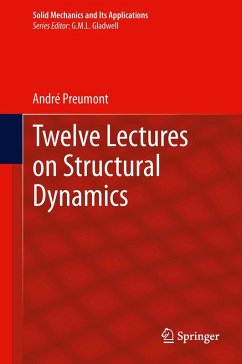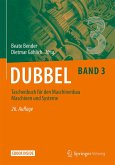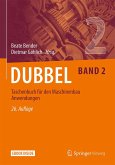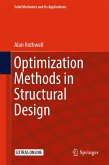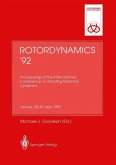This text addresses the modeling of vibrating systems with the perspective of finding the model of minimum complexity which accounts for the physics of the phenomena at play. The first half of the book (Ch.1-6) deals with the dynamics of discrete and continuous mechanical systems; the classical approach emphasizes the use of Lagrange's equations. The second half of the book (Ch.7-12) deals with more advanced topics, rarely encountered in the existing literature: seismic excitation, random vibration (including fatigue), rotor dynamics, vibration isolation and dynamic vibration absorbers; the final chapter is an introduction to active control of vibrations.
The first part of this text may be used as a one semester course for 3rd year students in Mechanical, Aerospace or Civil Engineering. The second part of the text is intended for graduate classes. A set of problems is provided at the end of every chapter. The author has a 35 years experience in various aspects of Structural dynamics, both in industry (nuclear and aerospace) and in academia; he was one of the pioneers in the field of active structures. He is the author of several books on random vibration, active structures and structural control.
The first part of this text may be used as a one semester course for 3rd year students in Mechanical, Aerospace or Civil Engineering. The second part of the text is intended for graduate classes. A set of problems is provided at the end of every chapter. The author has a 35 years experience in various aspects of Structural dynamics, both in industry (nuclear and aerospace) and in academia; he was one of the pioneers in the field of active structures. He is the author of several books on random vibration, active structures and structural control.
Dieser Download kann aus rechtlichen Gründen nur mit Rechnungsadresse in A, B, BG, CY, CZ, D, DK, EW, E, FIN, F, GR, HR, H, IRL, I, LT, L, LR, M, NL, PL, P, R, S, SLO, SK ausgeliefert werden.

